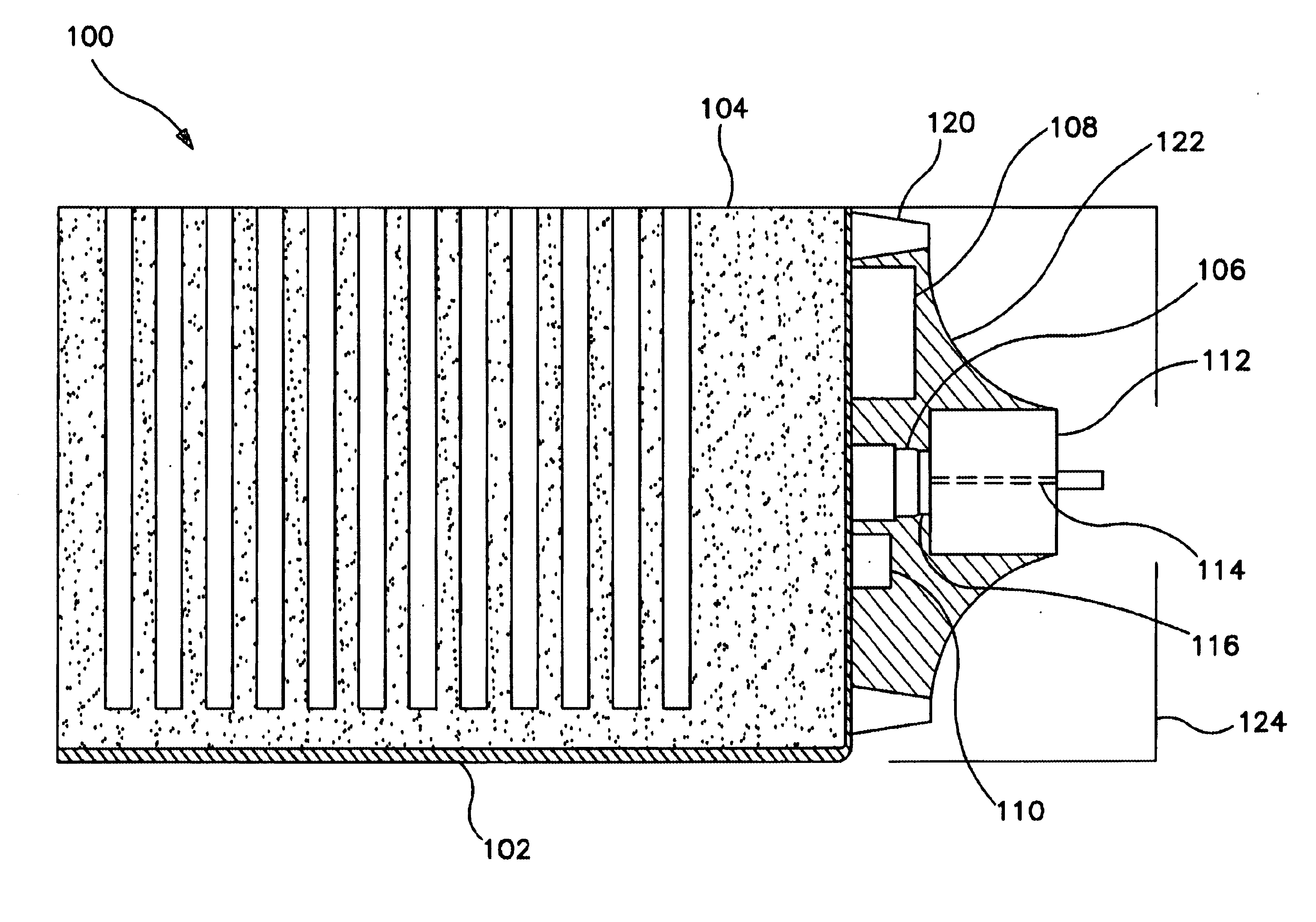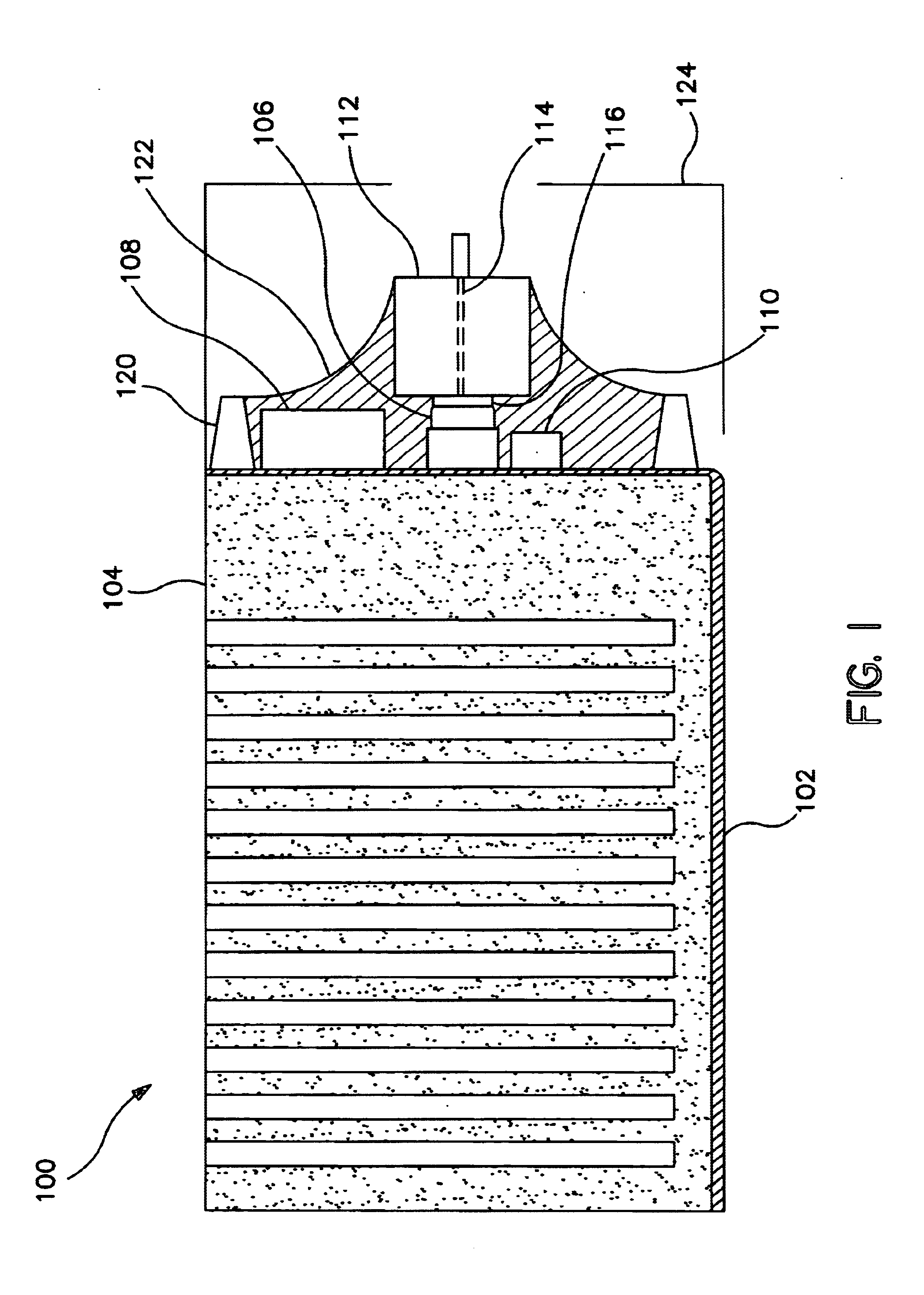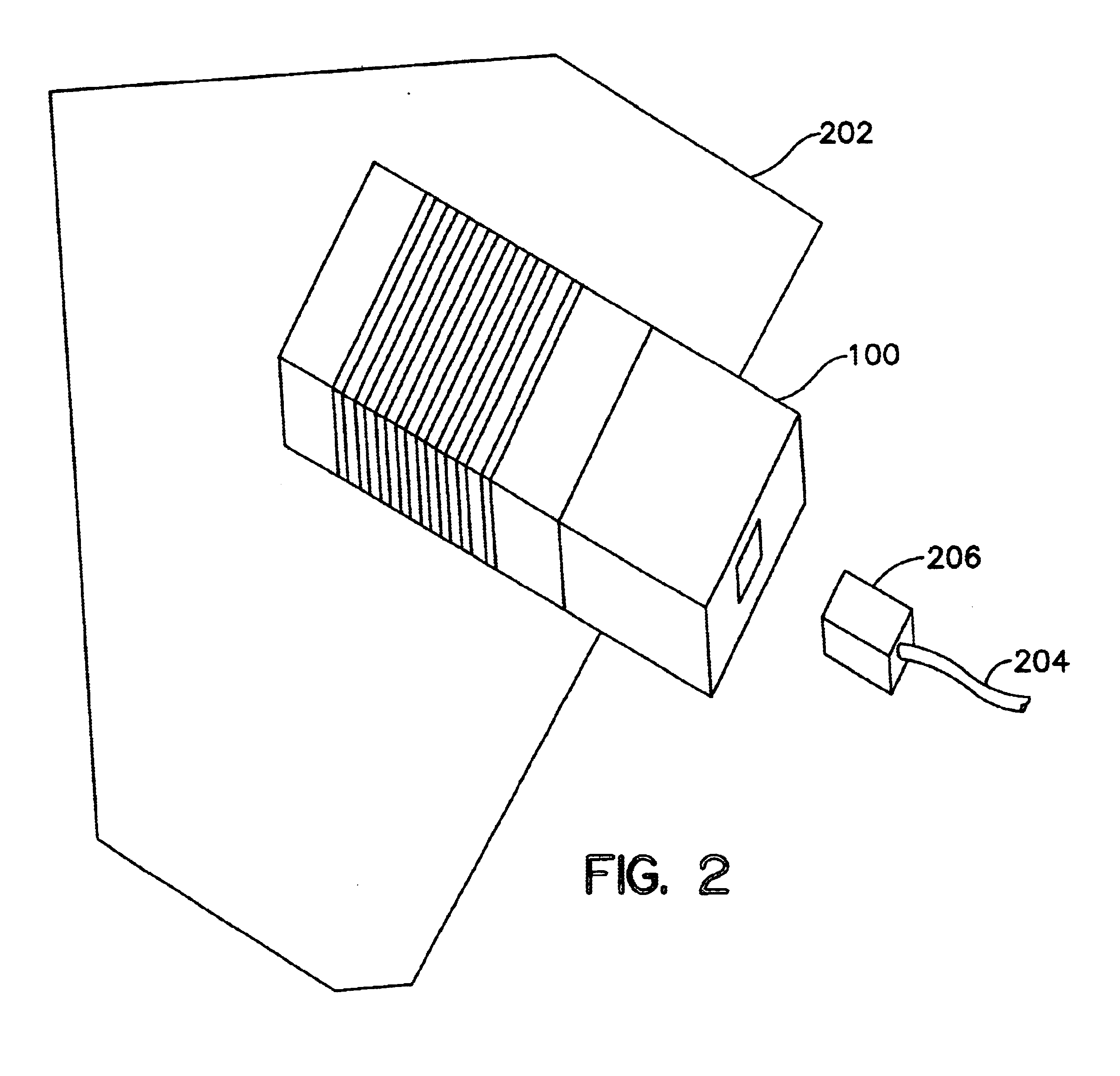Method and apparatus for coupling optical elements to optoelectronic devices for manufacturing optical transceiver modules
a technology of optoelectronic devices and optical elements, applied in the field of coupling optical elements to optoelectronic devices, can solve the problems of inability to effectively align an array of optical fibers to an array of optoelectronic devices, inability to achieve active alignment. the effect of a single optical fiber strand to an optoelectronic device, and the inability to achieve active alignment,
- Summary
- Abstract
- Description
- Claims
- Application Information
AI Technical Summary
Benefits of technology
Problems solved by technology
Method used
Image
Examples
Embodiment Construction
I. Introduction
[0055]The following embodiments will be described in the context of an optical transceiver, receiver or transceiver module and a method of making the same. Those skilled in the art, however, will recognize that the disclosed methods and structures are adaptable for broader applications. If the same reference numeral is repeated with respect to different figures, it refers to the corresponding structure in each figure.
[0056]With reference to FIG. 1, an optical transmitter, receiver or transceiver module 100 is depicted, according to an embodiment of the invention. The optical module 100 comprises a flexible printed circuit board 102 that wraps around and attaches to a circuit board mounting structure 104. The flexible printed circuit board 102 functions to support the electrical components of the optical module 100, such as an array of optoelectronic devices 106, a driver or amplifier chip 108, and a photo-detector 110. A first ferrule 112, packaging an array of optica...
PUM
 Login to View More
Login to View More Abstract
Description
Claims
Application Information
 Login to View More
Login to View More - R&D
- Intellectual Property
- Life Sciences
- Materials
- Tech Scout
- Unparalleled Data Quality
- Higher Quality Content
- 60% Fewer Hallucinations
Browse by: Latest US Patents, China's latest patents, Technical Efficacy Thesaurus, Application Domain, Technology Topic, Popular Technical Reports.
© 2025 PatSnap. All rights reserved.Legal|Privacy policy|Modern Slavery Act Transparency Statement|Sitemap|About US| Contact US: help@patsnap.com



